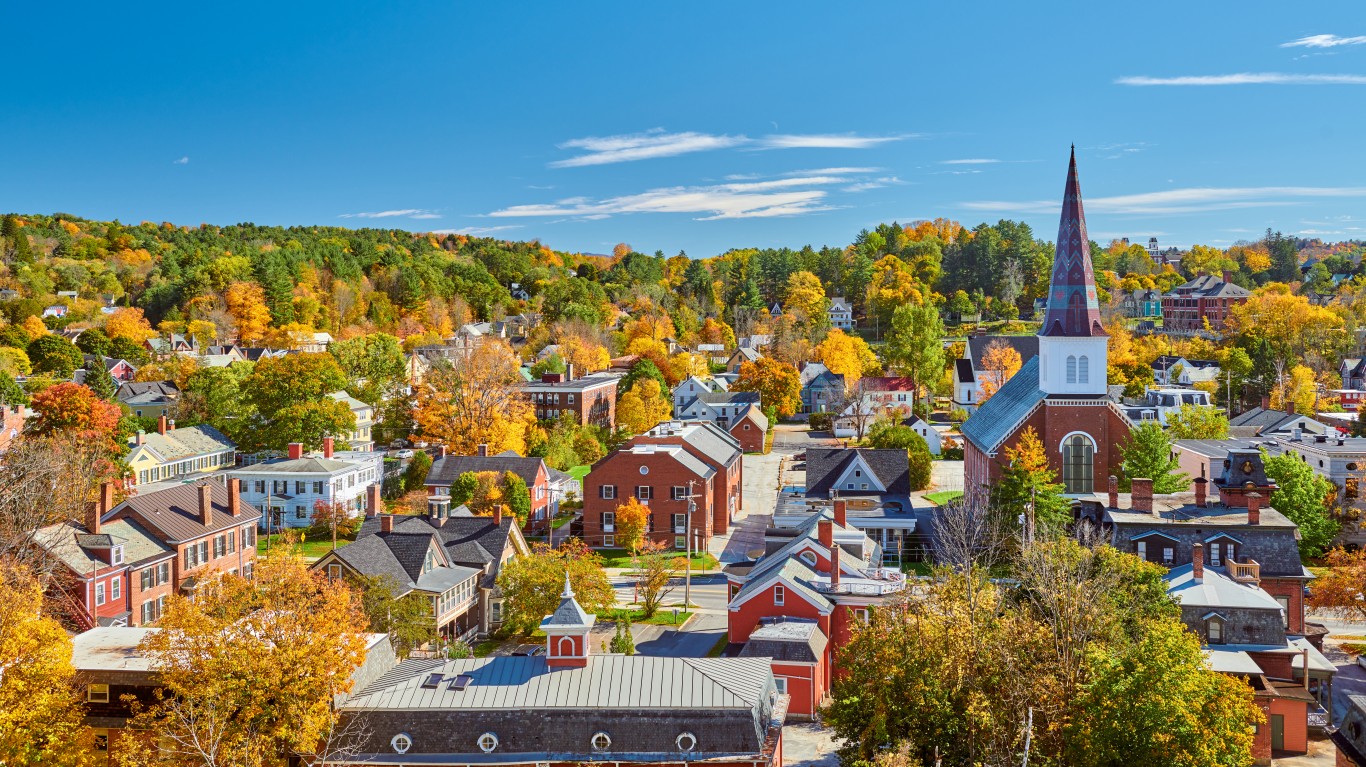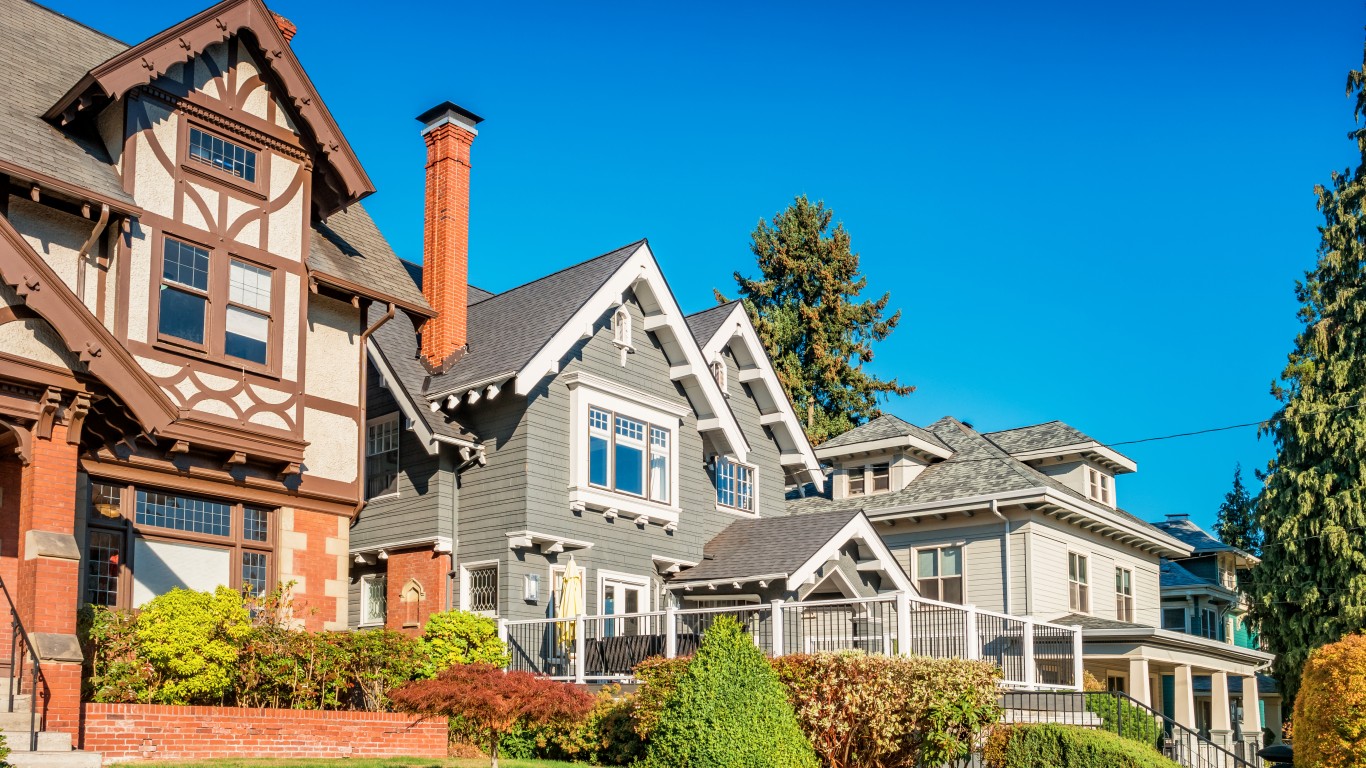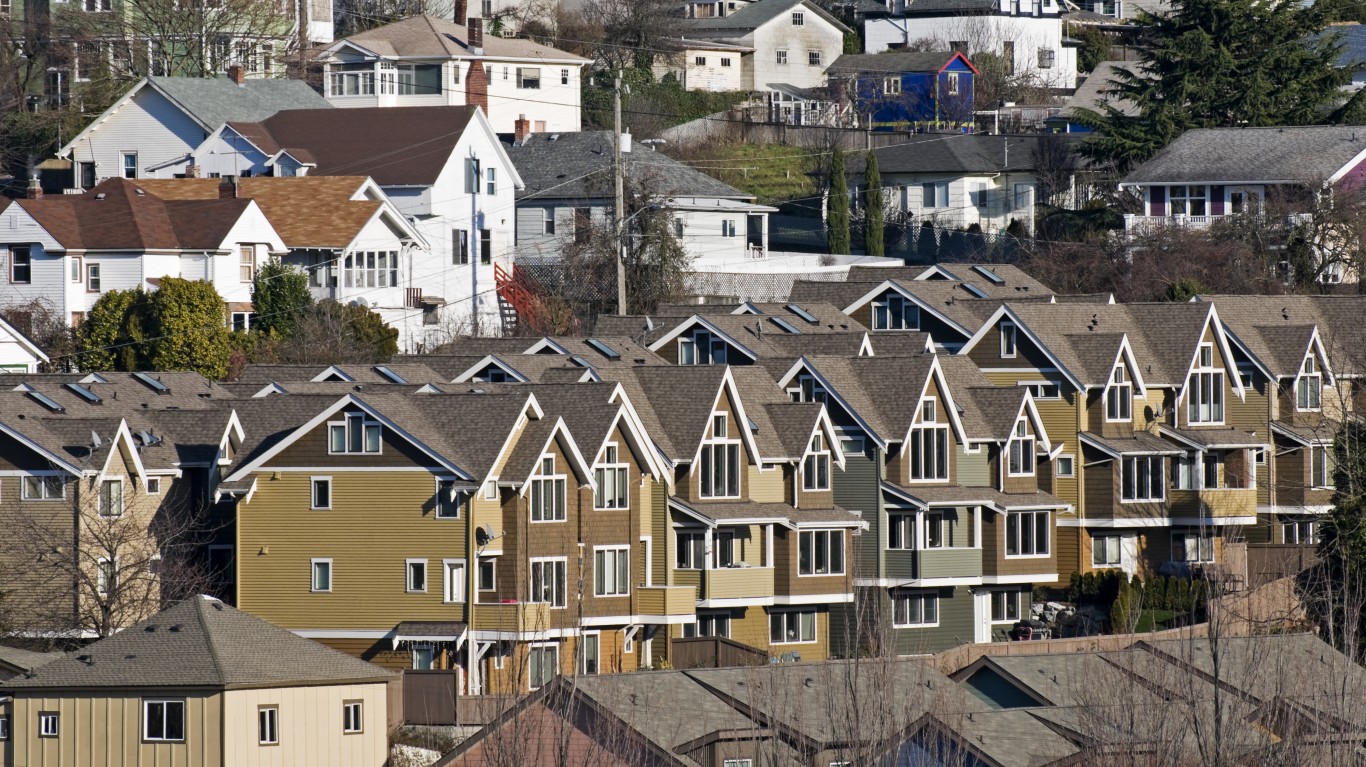
The coronavirus pandemic and other factors including an epidemic of synthetic opioid addiction and an increase in other so-called “deaths of despair” – from suicide and alcohol-related liver disease – has caused life expectancy at birth to decline in the U.S. by 1.5 years between 2019 and 2020, according to the latest data from the U.S. Centers of Disease Control and Prevention. (These are the states with the most fentanyl deaths.)
About 74% of the decline is attributed to the more than one million Americans who have died from Covid-19, while 11% is attributed to unintentional deaths, mostly from the drug overdoses that killed more than 93,000 people in the United States in 2020. Homicides and complications linked to diabetes were also contributing factors.
Life expectancy at birth is a scientific estimation of how many years a newborn in any given year will live. It’s a key metric in gauging public health trends, both long-term, like obesity, and temporary, such as wars and pandemics. Black and Hispanic Americans tend to live a few years less than the average of 77.3 years in 2020, and women tend to live a few years longer than men. People with health insurance usually live longer, too, since they are more likely to pursue preventative healthcare that can catch illnesses before they become terminal. (See how the fall in U.S. life expectancy compares to that of other wealthy nations.)
To identify the states where people live the longest, 24/7 Wall St. reviewed the Center for Disease Control’s National Vital Statistics Reports for each state’s life expectancy at birth in 2020, published August 23rd, 2022. Change in life expectancy in years from 2019 also comes from the CDC. The percentage of the population without health insurance and the total population come from the U.S. Census Bureau’s American Community Survey 2020 5-year statistics.
Click here to see the states where people live the longest
Not only your gender but where you’re born can definitely affect your lifespan. For example, the average life expectancy at birth across genders in six states is 79 years or more, while
the number for females in Hawaii is nearly 84 years, and males in Mississippi on average won’t see their 69th birthday.
And while all states experienced a decline in life expectancy at birth in 2020, New York, New Jersey, Louisiana, Arizona, and Mississippi saw it drop by 2.5 to 3 years. Vermont, Washington, Oregon, and New Hampshire, joined Hawaii – the leader in life expectancy – in having the lowest declines in 2020.

22. North Dakota
> Life expectancy at birth 2020: 76.9
> Change from 2019 (in years): -1.9 — 17th highest
> Pct. without health insurance: 7.2 — 22nd lowest
> Total population: 760,394 — 4th lowest
[in-text-ad]

21. Florida
> Life expectancy at birth 2020: 77.5 (tie)
> Change from 2019 (in years): -1.5 — 15th lowest
> Pct. without health insurance: 12.7 — 4th highest
> Total population: 21,216,924 — 3rd highest

20. New Jersey
> Life expectancy at birth 2020: 77.5 (tie)
> Change from 2019 (in years): -2.6 — 3rd highest
> Pct. without health insurance: 7.6 — 23rd lowest
> Total population: 8,885,418 — 11th highest

19. Iowa
> Life expectancy at birth 2020: 77.5 (tie)
> Change from 2019 (in years): -1.5 — 15th lowest
> Pct. without health insurance: 4.7 — 6th lowest
> Total population: 3,150,011 — 20th lowest
[in-text-ad-2]

18. Virginia
> Life expectancy at birth 2020: 77.6
> Change from 2019 (in years): -1.5 — 15th lowest
> Pct. without health insurance: 8.2 — 23rd highest
> Total population: 8,509,358 — 12th highest

17. New York
> Life expectancy at birth 2020: 77.7 (tie)
> Change from 2019 (in years): -3.0 — the highest
> Pct. without health insurance: 5.4 — 9th lowest
> Total population: 19,514,849 — 4th highest
[in-text-ad]

16. Nebraska
> Life expectancy at birth 2020: 77.7 (tie)
> Change from 2019 (in years): -1.5 — 15th lowest
> Pct. without health insurance: 8.1 — 24th highest
> Total population: 1,923,826 — 14th lowest

15. Wisconsin
> Life expectancy at birth 2020: 77.7 (tie)
> Change from 2019 (in years): -1.6 — 21st lowest
> Pct. without health insurance: 5.5 — 10th lowest
> Total population: 5,806,975 — 20th highest

14. Maine
> Life expectancy at birth 2020: 77.8
> Change from 2019 (in years): -0.5 — 3rd lowest
> Pct. without health insurance: 7.6 — 24th lowest
> Total population: 1,340,825 — 9th lowest
[in-text-ad-2]

13. Rhode Island
> Life expectancy at birth 2020: 78.2
> Change from 2019 (in years): -1.3 — 10th lowest
> Pct. without health insurance: 4.3 — 4th lowest
> Total population: 1,057,798 — 7th lowest

12. Colorado
> Life expectancy at birth 2020: 78.3
> Change from 2019 (in years): -1.7 — 25th lowest
> Pct. without health insurance: 7.8 — 25th lowest
> Total population: 5,684,926 — 21st highest
[in-text-ad]

11. Connecticut
> Life expectancy at birth 2020: 78.4 (tie)
> Change from 2019 (in years): -1.9 — 17th highest
> Pct. without health insurance: 5.1 — 7th lowest
> Total population: 3,570,549 — 22nd lowest

10. Idaho
> Life expectancy at birth 2020: 78.4 (tie)
> Change from 2019 (in years): -1.1 — 7th lowest
> Pct. without health insurance: 10.4 — 12th highest
> Total population: 1,754,367 — 12th lowest

9. Utah
> Life expectancy at birth 2020: 78.6
> Change from 2019 (in years): -1.1 — 7th lowest
> Pct. without health insurance: 9.0 — 18th highest
> Total population: 3,151,239 — 21st lowest
[in-text-ad-2]

8. Vermont
> Life expectancy at birth 2020: 78.8 (tie)
> Change from 2019 (in years): -1.0 — 6th lowest
> Pct. without health insurance: 4.0 — 3rd lowest
> Total population: 624,340 — 2nd lowest

7. Oregon
> Life expectancy at birth 2020: 78.8 (tie)
> Change from 2019 (in years): -0.8 — 4th lowest
> Pct. without health insurance: 6.6 — 19th lowest
> Total population: 4,176,346 — 24th lowest
[in-text-ad]

6. California
> Life expectancy at birth 2020: 79.0 (tie)
> Change from 2019 (in years): -1.9 — 17th highest
> Pct. without health insurance: 7.2 — 21st lowest
> Total population: 39,346,023 — the highest

5. Massachusetts
> Life expectancy at birth 2020: 79.0 (tie)
> Change from 2019 (in years): -1.4 — 12th lowest
> Pct. without health insurance: 2.7 — the lowest
> Total population: 6,873,003 — 15th highest

4. New Hampshire
> Life expectancy at birth 2020: 79.0 (tie)
> Change from 2019 (in years): -0.4 — 2nd lowest
> Pct. without health insurance: 6.0 — 15th lowest
> Total population: 1,355,244 — 10th lowest
[in-text-ad-2]

3. Minnesota
> Life expectancy at birth 2020: 79.1
> Change from 2019 (in years): -1.3 — 10th lowest
> Pct. without health insurance: 4.5 — 5th lowest
> Total population: 5,600,166 — 22nd highest

2. Washington
> Life expectancy at birth 2020: 79.2
> Change from 2019 (in years): -0.8 — 4th lowest
> Pct. without health insurance: 6.2 — 18th lowest
> Total population: 7,512,465 — 13th highest
[in-text-ad]

1. Hawaii
> Life expectancy at birth 2020: 80.7
> Change from 2019 (in years): -0.2 — the lowest
> Pct. without health insurance: 3.9 — 2nd lowest
> Total population: 1,420,074 — 11th lowest
It’s Your Money, Your Future—Own It (sponsor)
Retirement can be daunting, but it doesn’t need to be.
Imagine having an expert in your corner to help you with your financial goals. Someone to help you determine if you’re ahead, behind, or right on track. With SmartAsset, that’s not just a dream—it’s reality. This free tool connects you with pre-screened financial advisors who work in your best interests. It’s quick, it’s easy, so take the leap today and start planning smarter!
Don’t waste another minute; get started right here and help your retirement dreams become a retirement reality.
Thank you for reading! Have some feedback for us?
Contact the 24/7 Wall St. editorial team.
 24/7 Wall St.
24/7 Wall St. 24/7 Wall St.
24/7 Wall St. 24/7 Wall St.
24/7 Wall St.


